Safe, sensible Volvo is an obvious choice for many family car drivers.
So, if you're shopping spacious SUVs with Swedish charm, the Volvo XC40 and Volvo XC60 are easy to recommend. But which is the best choice for you?
We'll compare the XC40 and XC60 here to help you pick your favourite. Once you've chosen, save thousands on your next car by browsing nearly new and used cars for sale at Motorpoint.
Volvo XC40 vs XC60 compared
| Volvo XC40 | Volvo XC60 |
Pros:
| Pros:
|
Cons:
| Cons:
|
Styling and design

Side-by-side, the family resemblance is obvious between the XC40 and XC60. Both have swept-back headlight designs with distinctive 'Thor's hammer' running lights – essentially a sideways 'T'. These units frame a mostly rectangular grille that's found across the Volvo range, complete with the brand's badge presented on a sash-like chrome ribbon.
The side view reveals more obvious differences. You'll spot the XC40's windowline is shorter, with a sharply rising line behind the rear passenger window. This line meets the C-pillar to form the back end of the car, and also marks the intersection where the XC40's contrast-colour roof – where fitted – meets the body colour.
Compared to the XC40, the XC60's profile is a little more conventional. There's a longer rear passenger window with another sizeable pane behind it, giving the car a longer look with separate C and D-pillars, and slightly improving over-the-shoulder visibility. The deep styling crease that makes up the lower portion of the XC40's doors have been toned down on the XC60, giving it a somewhat less pronounced midriff.
Interior and practicality
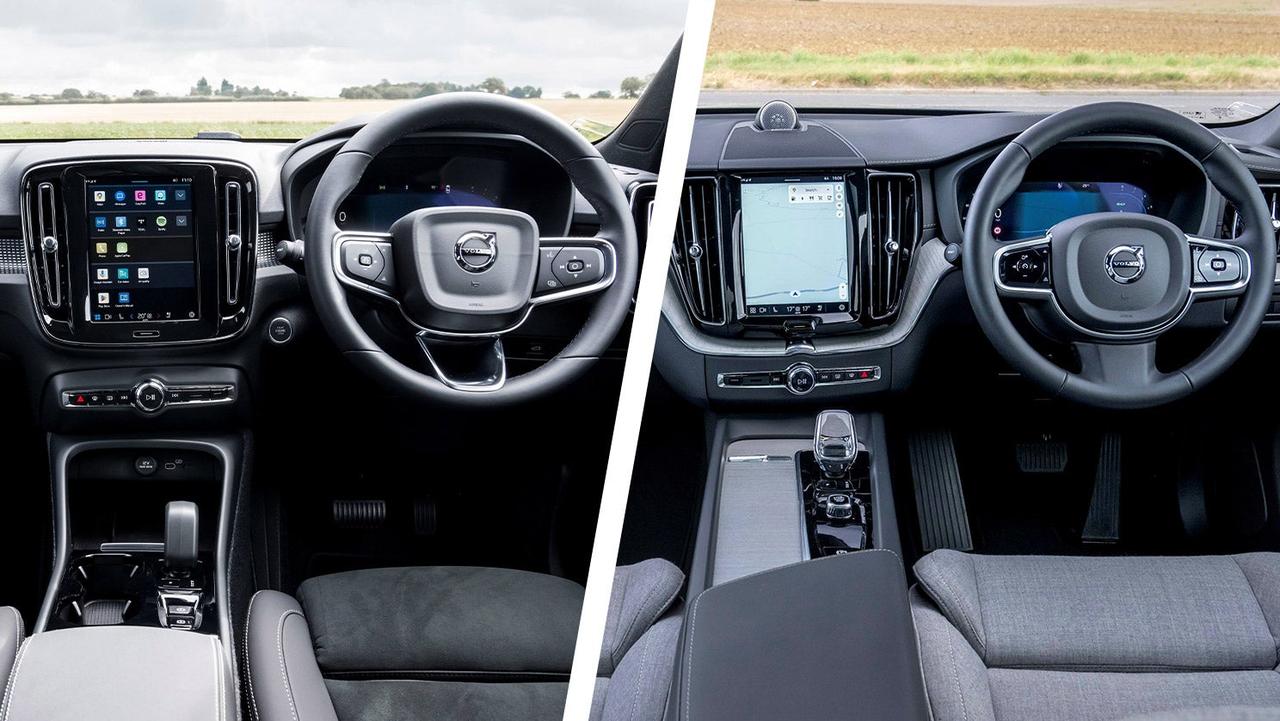
The overall layout between the two cars is very similar. There are digital dials behind the steering wheel, with a portrait-orientated infotainment touchscreen to the left of it. This central screen is flanked by tall, thin air vents and has a strip of physical shortcut buttons beneath it, including a proper knob to adjust the volume. In the centre console, you'll find cupholders and general storage, plus a stubby automatic gear selector.
Differences between the two cars are remarkably subtle. The XC60, for example, has an unbroken line that forms the top of its dashboard, with the driver's binnacle, air vents and infotainment screen all neatly aligned with this detail. Step into the XC40, and you'll spot that the dials, vents and screens jut out of the dashboard as separate pods, rather than blending into the main design.
The most meaningful differences are in practicality. While both SUVs are five-seaters, the XC60 offers a noticeable jump in rear-seat legroom, which means tall passengers can stretch out rather than merely fitting acceptably, as they do in the XC40. However, the XC40 punches above its weight for cargo space, with its 452-litre boot only fractionally down on the XC60's 483 litres. Whichever you pick, both are large enough for family SUV duties, though you might prefer the XC60 if you're often carrying tall passengers.
Engines and performance
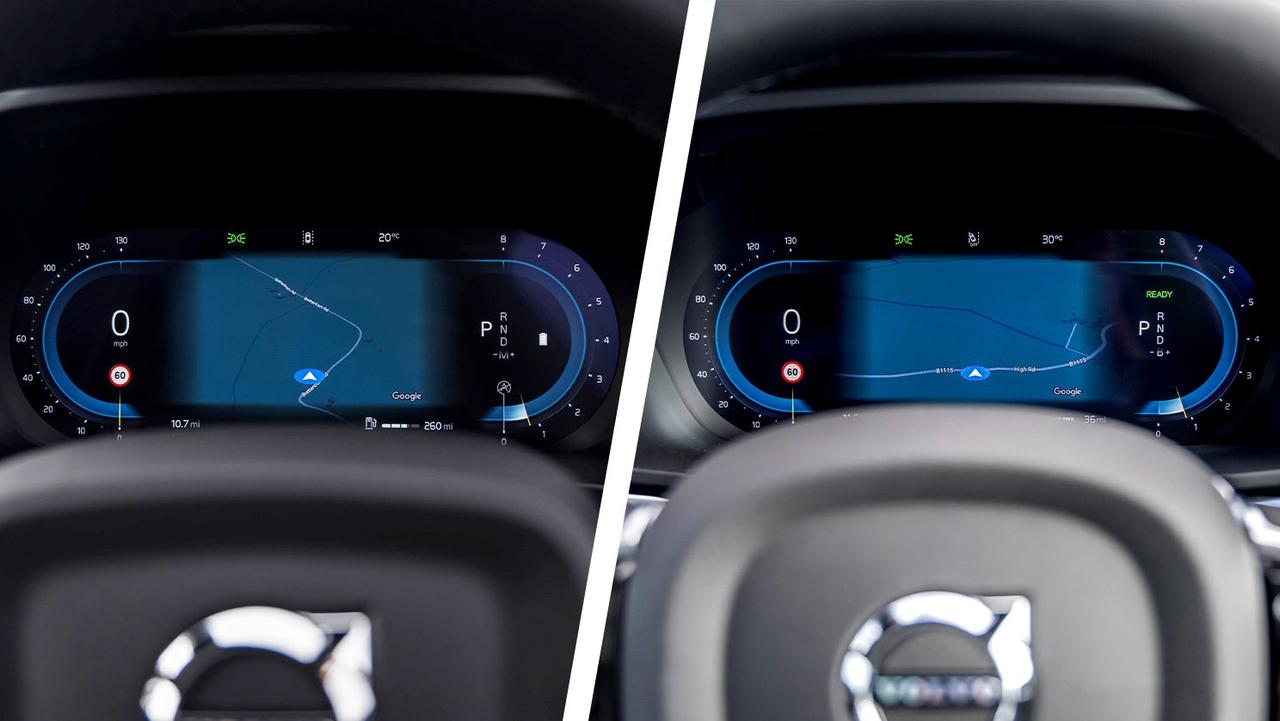
XC40 cars are currently offered with mild-hybrid petrol engines or as the fully electric EX40. In the past, it's also been offered with plug-in hybrid or diesel power, and with a manual gearbox on entry-level versions. In our experience, the best versions are the ones Volvo still makes – automatic petrol models and fully electric models – as these offer a great blend of power and refinement, suiting the car's fairly calm character.
Moving to the XC60, there's a choice of mild-hybrid petrol and plug-in hybrid versions, with diesel also available on earlier models. All XC60s are automatic only with no three-pedal option in the lineup. Many of the XC60s engines are shared with the XC40 but they're a little more refined in the larger car, with less engine noise making it to your ears when you accelerate.
Despite their calm demeanour, both the XC40 and XC60 are available with serious firepower if you want something quick. For the XC40, you'll need to turn to the electric EX40 version – previously called the XC40 Recharge – which, in dual-motor guise, puts 402hp to the ground for swift, silent acceleration. If you're shopping XC60s, keep an eye out for the T8 plug-in hybrid, which makes a massive 455hp with both power sources at full tilt.
Driving
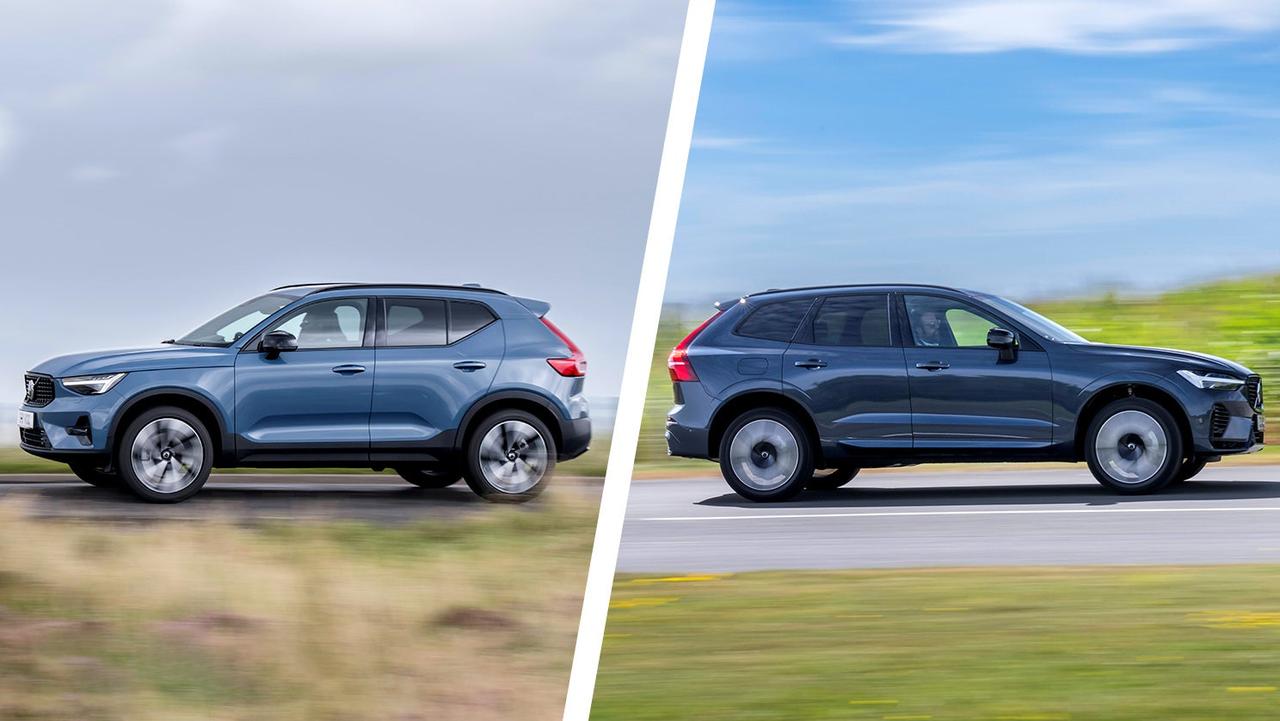
There are plenty of similarities between the XC40 and XC60 on the road. Compared to their traditional premium rivals from Germany, the Swedes are set up with a greater focus on comfort. You'll sense a fair amount of body motion as you hit bumps and undulations in the road, with the Volvos' suspension systems trying their best to glide over imperfections, rather than stamping them down like a BMW X3, for example.
While the XC40 is obviously the smaller of the two, it still feels quite substantial behind the wheel. It doesn't relish being thrown at corners, and will reward you with plenty of lean if you turn the steering wheel too hard. You sit high up, which amplifies the car's already fairly bouncy ride quality, but does at least mean down-the-road visibility is confidence-inspiring.
The difference when driving the XC60 isn't night-and-day. It's still fairly soft overall, with plenty of body motion if you ask too much of the suspension or steering. We reckon the XC60 is the slightly comfier of the two, feeling a little less bouncy, with fewer aftershocks following suspension impacts. It's also a touch more refined, with less road and engine noise but, again, the differences are pretty marginal.
Value and reliability
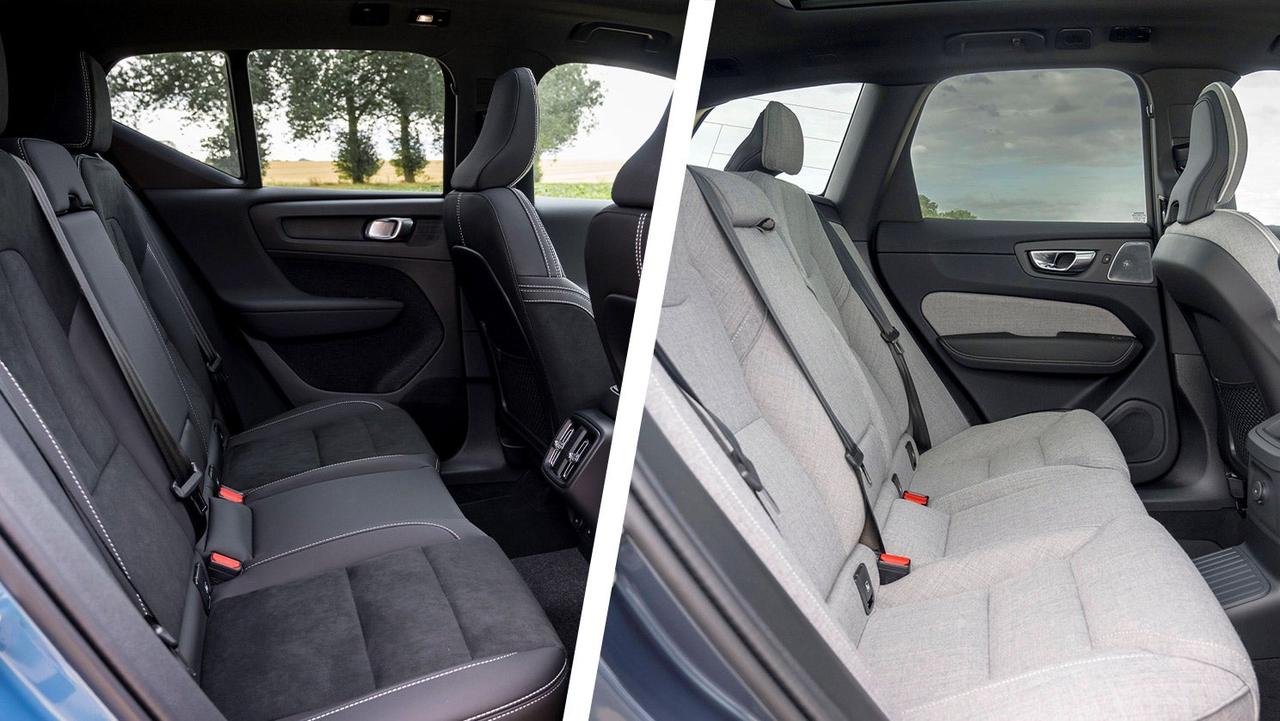
As brand-new cars, the XC40 is noticeably more affordable than the XC60. Entry-level B3 Core models start from roughly £37,000, rising to £47,000 for range-topping Ultra trim and the more powerful B4 engine. The XC60 starts at just less than £49,000, although that price does buy the more powerful B5 engine with all-wheel drive. That rises to just shy of £63,000 for Ultra models, with another £5,000 jump if you want the plug-in hybrid.
Those prices start to fall sharply if you shop nearly new and used models. While the XC40 remains the cheaper of the two overall, the XC60's prices fall a little faster proportionally. That means that the price gap between the two models gets smaller on the used market, and draws even closer as they get older.
Reliability surveys generally return favourable results for these two models, usually either matching or outperforming equivalent models from BMW, Audi and Mercedes. Most problems reported are fairly minor and straightforward to fix. Keeping on top of scheduled maintenance is the best way to keep your car running as long as possible, and you might want to consider an extended warranty for greater peace of mind as a used-car buyer.
Which is best?
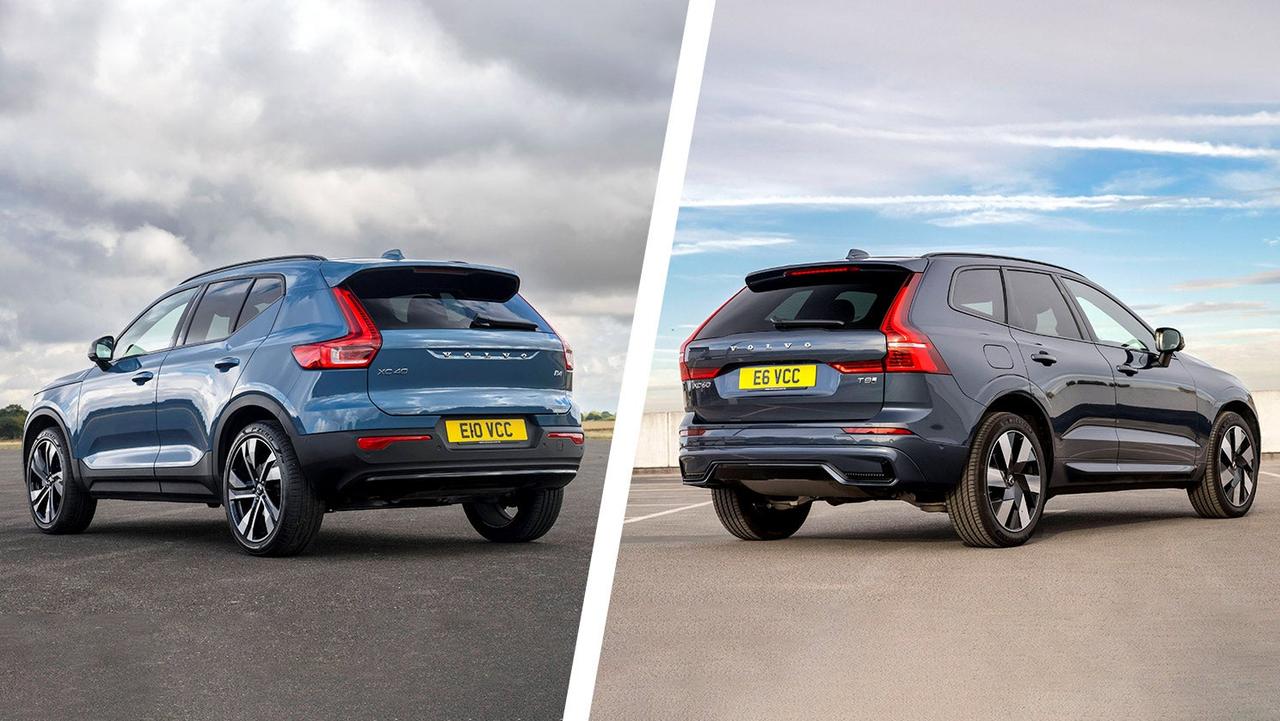
If we were buying these models brand-new from Volvo, we think the XC40 is the one to go for. Its driving experience is nearly as comfy and refined as the XC60, with only a small drop in practicality, but at a substantially more affordable price.
However, as nearly new or used cars, the choice is less obvious because most of the XC60's price premium over the XC40 is erased. At this point, it's easier to justify stretching to the XC60 to enjoy its more luxurious rear-seat accommodation, along with its extra power and marginally better ride comfort.
Save thousands on your next car
Shop a huge range of nearly new and used cars for sale at Motorpoint, including a wide choice of used Volvo cars. For more inspiration, check out our picks for the best family SUVs on sale.



































